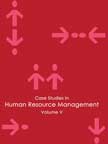Johnson and Johnson's Health and Wellness Program
|
|
ICMR HOME | Case Studies Collection
Case Details:
Case Code : HROB025
Case Length : 14 Pages
Period : 1998 - 2001
Pub Date : 2001
Teaching Note :Not Available
Organization : Johnson and Johnson's
Industry : Consumer Goods
Countries : USA
To download Johnson and Johnson's Health and Wellness Program Issues case study
(Case Code: HROB025) click on the button below, and select the case from the list of available cases:

Price:
For delivery in electronic format: Rs. 400;
For delivery through courier (within India): Rs. 400 + Shipping & Handling Charges extra
» Human Resource and Organization Behavior Case Studies
» HRM Short Case Studies
» View Detailed Pricing Info
» How To Order This Case
» Business Case Studies
» Area Specific Case Studies
» Industry Wise Case Studies
» Company Wise Case Studies

Please note:
This case study was compiled from published sources, and is intended to be used as a basis for class discussion. It is not intended to illustrate either effective or ineffective handling of a management situation. Nor is it a primary information source.
Chat with us

Please leave your feedback

|
|




<< Previous
Introduction Contd...
|
Moreover, within two years of implementing HWP, J&J witnessed a decline of 15%
in employee absenteeism rate. Peter Soderberg, President, J&J explained the
rationale behind implementing the program7,
"Our research time and time again
confirms the benefits of healthier, fitter employees. They have fewer and lower
long-term medical claims, they are absent less, their disability costs are lower
and their perceived personal productivity and job/life satisfaction levels are
higher." Ron Z. Goetzel (Goetzel), Vice-President, Consulting and Applied
Research, MEDSTAT Group8 added, "There's a
growing body of data indicating that corporate wellness programs lower medical
costs for employees."9
|

|
Background Note
The US industry spent approximately $200 bn per annum on employee health
insurance claims, on-site accidents, burn-out and absenteeism, lower
productivity and decreased employee morale due to health problems.
|
|
Moreover, according to the estimates of Mercer10,
the US industry expenditure on the medical and disability bills of
employees was rising significantly. In 1998, companies had paid an
estimated $4000 per annum per employee as healthcare costs, and that
rose to $5,162 in 2001 and around $5,700 in 2002. Apart from other
health related problems (Refer Table I), stress at workplace was
considered to be one of the main reasons for this high expenditure.
Work stress led to problems like nervousness, tension, anxiety, loss
of patience, inefficiency in work and even chronic diseases like
cardiac arrest and hypertension. As a result of these health
problems, absenteeism increased and productivity of employees
declined. |
Excerpts >>
|
|










